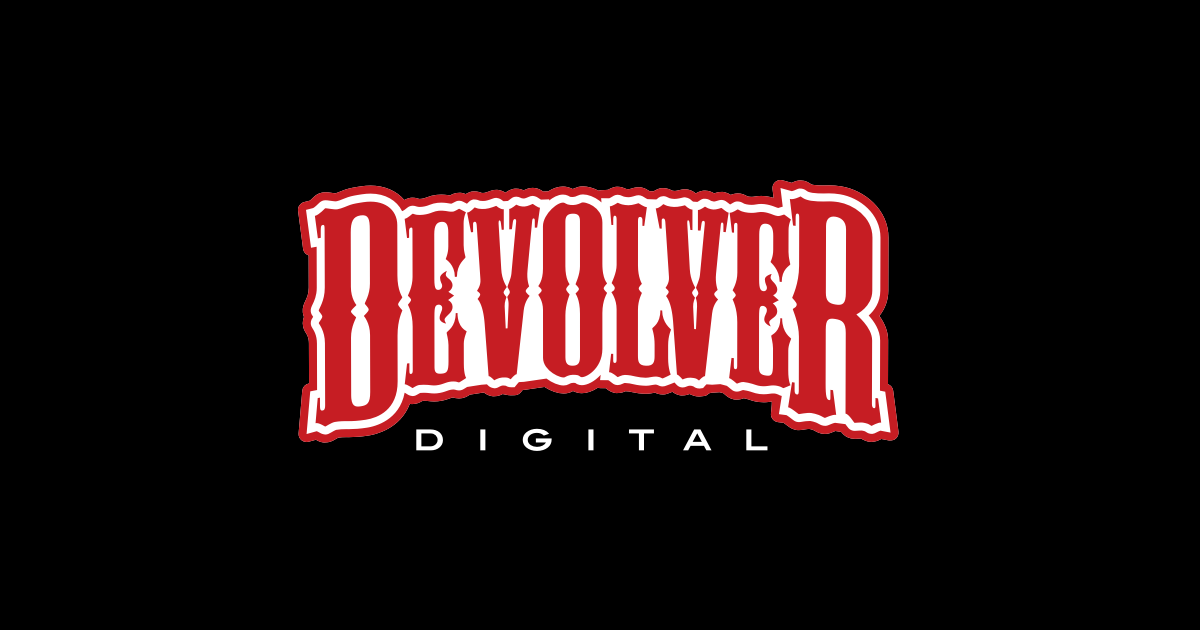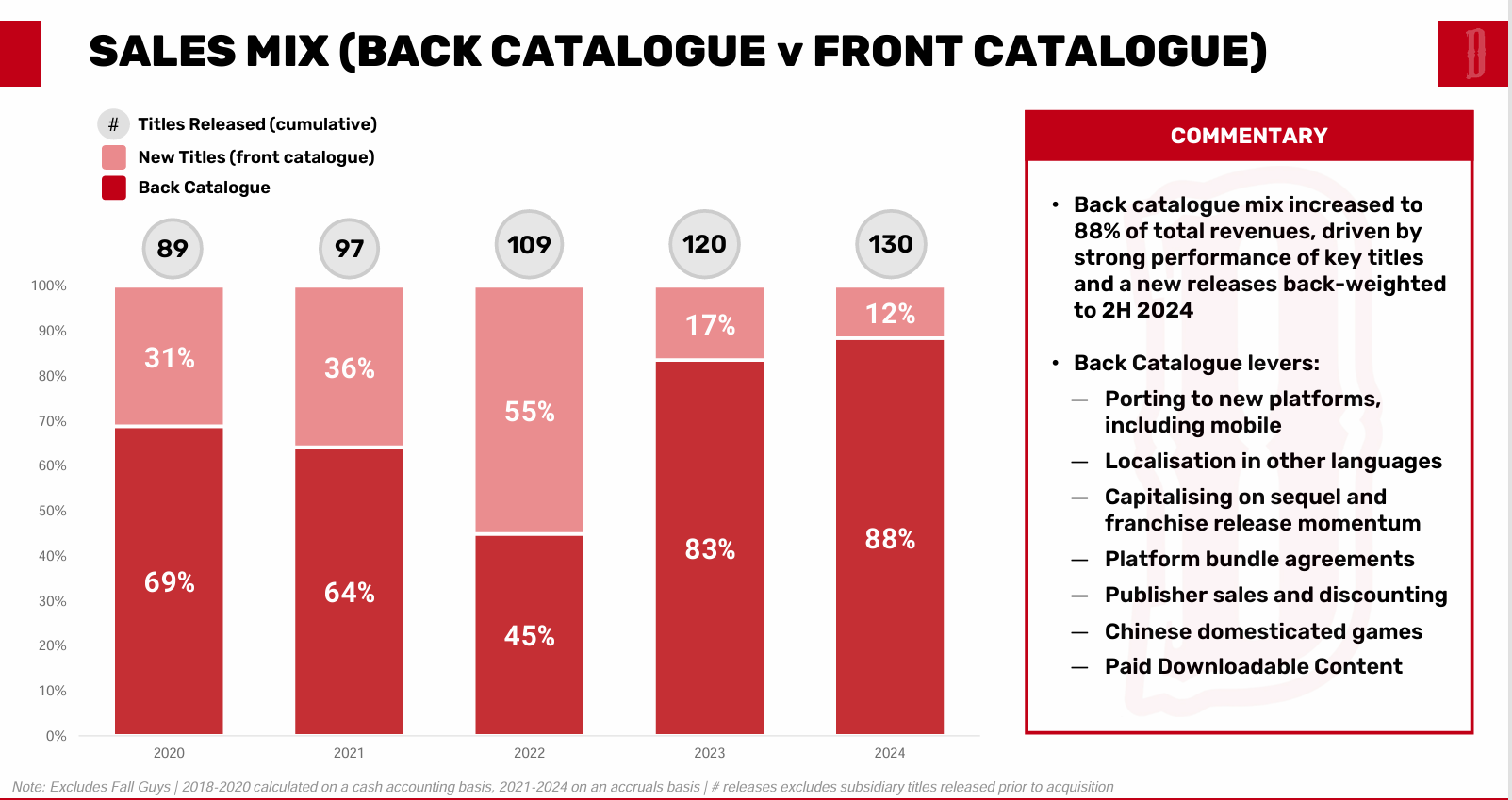The Rise of the Great Indie Franchise
How indie game development is changing with the times

Financial documents and investor presentations aren't exactly scintillating, but there can be some interesting tidbits hidden in them if you're willing to go deep. Such is the case with a recent Devolver Digital presentation (courtesy of GameDiscoverCo). Devolver is one of the oldest and largest of what are now known as "indie publishers" - and after the high profile collapse of several publishers last year, they're one of the few remaining in their weight class.
While the competition may have been dying off, 2024 was a good year for Devolver. That their profits were up is not what's interesting, though; it's what was driving those profits. The money came overwhelmingly from Devolver's sizable back catalog, with 7/8ths of its revenue coming from games released prior to 2024.

There are a few factors driving this, including ports, localization, and expansion into new territories, but there's one big one that carries a lot of weight: DLC.
Devolver has a lot of arrows in its quiver, but just two games have driven much of their recent success. First is Cult of the Lamb, the 2022 phenomenon that represents their biggest game to date, and second is Astroneer, a 2023 acquisition that's proven nearly as profitable. Both games had significant expansions and updates in 2024, and it's this (as well as updates to a few other popular games) that has driven most of their success.
The lesson Devolver is taking from this is a simple one. Since people are spending more time with their existing IPs, it makes sense to focus on them. Thus, in the future, they plan on investing more heavily in expansions, rereleases, and definitive editions and less in new IPs. I suspect we'll see a nice, steady release of brand-new third-party games, but the lucky few who get that Devolver blessing will be getting less money as Devolver reduces investment in the new in favor of updating the old.
What's happening here is hardly unique to Devolver. Many people in video games - from industry insiders all the way down to bedroom developers - have discovered that the current economic and media environment favors releasing fewer games and then supporting them for longer periods of time.
You might call this the "live service lite" model, and it's been a bit underexplored. Where a true live service game is supported by a regular content release schedule, the lightweight version receives semi-regular updates consisting of a mix of premium DLC and free updates. It's an approach that many developers are starting to favor, particularly smaller ones that couldn't possibly manage the labor-intensive upkeep of a live service game but still find it easier to build onto an existing game than to start from scratch.
The term I'm dancing around here is "franchise." It's a funny term to use to describe a single game, but as video games have turned into ongoing projects that are never truly "finished," some of the bigger titles have become franchises unto themselves.

Franchises are, of course, a big deal right now, but so is the service model for entertainment. The return of the miniseries and the serial novel, the rise of episodic podcasting, and the development of what's been called the "endless single" model for music all reflect a change in how people experience art and media. We've grown to expect to be entertained all the time, so entertainment transformed from an event to a steady drip.
What's interesting is how independent artists have had to keep pace with this. Musicians are usually a little bit ahead of the curve in this regard. Look at the YouTube channel for any major artist and you'll see how far they've taken the endless single approach, to the point where they can get seven or eight videos out of the release of a single song. Upstart artists are having to follow suit, doing anything they can to maximize releases in between music videos and album launches. It's simply how the game is played in an environment where quantity counts at least as much as quality.
For small game developers, this has become a fact of life. When you see a brand new developer put out a road map for their first game, it might seem like they have ideas above their station, but really they're just playing the cards they've been dealt. Indies need to build momentum, so it's even more important for the upstarts to keep those updates rolling in than it is for larger, more established studios. These days, any developer trying to make this into a career needs to think of their game as the start of a franchise and build from there.
But what does that do for the games themselves? As of right now, the number of games being produced is continuing to grow out of control. If things keep up, we could see more than 20,000 new titles hit Steam in 2025, a number exceeding all of the official releases on the first five generations of consoles. And with less investment money to go around, it's harder to get noticed. Anyone lucky enough to enjoy any success in this environment is likely to stick with it rather than move on to the next project.
Whether this is good or bad is a matter of perspective. People are playing fewer games overall, and many people would rather see more content for games they like than take a risk on something new. But if fewer people are willing to take those risks, it could mean fewer new ideas entering the pipeline. With the indie space being one of the last real incubators for new ideas, that would be a devastating loss.
